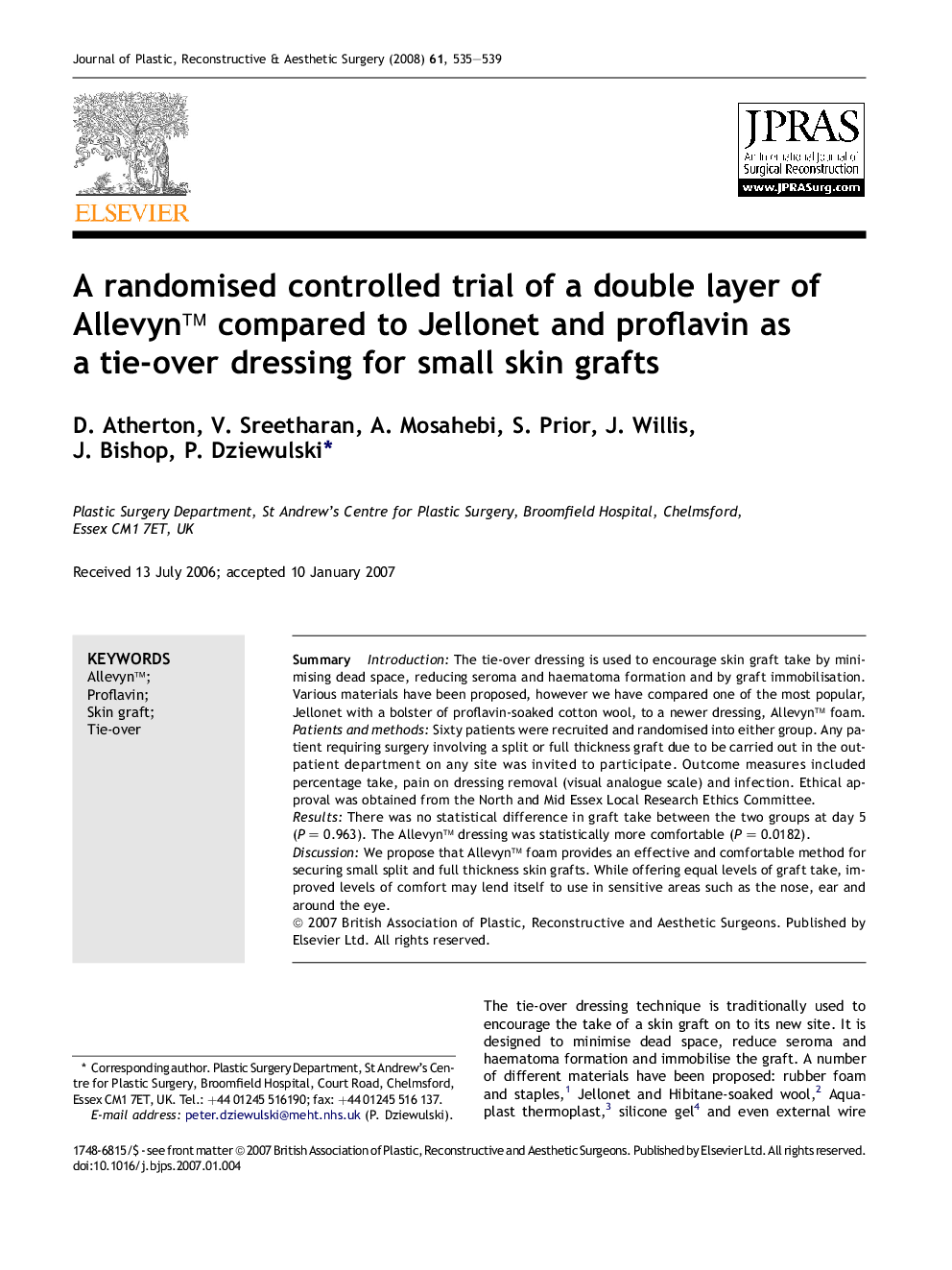| Article ID | Journal | Published Year | Pages | File Type |
|---|---|---|---|---|
| 4122238 | Journal of Plastic, Reconstructive & Aesthetic Surgery | 2008 | 5 Pages |
SummaryIntroductionThe tie-over dressing is used to encourage skin graft take by minimising dead space, reducing seroma and haematoma formation and by graft immobilisation. Various materials have been proposed, however we have compared one of the most popular, Jellonet with a bolster of proflavin-soaked cotton wool, to a newer dressing, Allevyn™ foam.Patients and methodsSixty patients were recruited and randomised into either group. Any patient requiring surgery involving a split or full thickness graft due to be carried out in the outpatient department on any site was invited to participate. Outcome measures included percentage take, pain on dressing removal (visual analogue scale) and infection. Ethical approval was obtained from the North and Mid Essex Local Research Ethics Committee.ResultsThere was no statistical difference in graft take between the two groups at day 5 (P = 0.963). The Allevyn™ dressing was statistically more comfortable (P = 0.0182).DiscussionWe propose that Allevyn™ foam provides an effective and comfortable method for securing small split and full thickness skin grafts. While offering equal levels of graft take, improved levels of comfort may lend itself to use in sensitive areas such as the nose, ear and around the eye.
